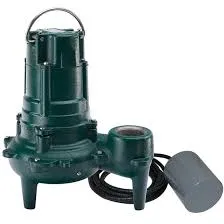English
- Afrikaans
- Albanian
- Amharic
- Arabic
- Armenian
- Azerbaijani
- Basque
- Belarusian
- Bengali
- Bosnian
- Bulgarian
- Catalan
- Cebuano
- Corsican
- Croatian
- Czech
- Danish
- Dutch
- English
- Esperanto
- Estonian
- Finnish
- French
- Frisian
- Galician
- Georgian
- German
- Greek
- Gujarati
- Haitian Creole
- hausa
- hawaiian
- Hebrew
- Hindi
- Miao
- Hungarian
- Icelandic
- igbo
- Indonesian
- irish
- Italian
- Japanese
- Javanese
- Kannada
- kazakh
- Khmer
- Rwandese
- Korean
- Kurdish
- Kyrgyz
- Lao
- Latin
- Latvian
- Lithuanian
- Luxembourgish
- Macedonian
- Malgashi
- Malay
- Malayalam
- Maltese
- Maori
- Marathi
- Mongolian
- Myanmar
- Nepali
- Norwegian
- Norwegian
- Occitan
- Pashto
- Persian
- Polish
- Portuguese
- Punjabi
- Romanian
- Russian
- Samoan
- Scottish Gaelic
- Serbian
- Sesotho
- Shona
- Sindhi
- Sinhala
- Slovak
- Slovenian
- Somali
- Spanish
- Sundanese
- Swahili
- Swedish
- Tagalog
- Tajik
- Tamil
- Tatar
- Telugu
- Thai
- Turkish
- Turkmen
- Ukrainian
- Urdu
- Uighur
- Uzbek
- Vietnamese
- Welsh
- Bantu
- Yiddish
- Yoruba
- Zulu
Telephone: +86 13120555503
Email: frank@cypump.com
Dec . 23, 2024 08:22 Back to list
Pumping Techniques for Hydrated Lime Slurry in Industrial Applications and Processes
Pumping Hydrated Lime Slurry A Comprehensive Overview
Hydrated lime, also known as calcium hydroxide, is an essential compound widely used in various industrial applications, including water treatment, soil stabilization, and chemical manufacturing. One of the most effective ways to utilize hydrated lime is in the form of a slurry. Pumping hydrated lime slurry is a critical process in many industries, requiring specific techniques and equipment to ensure efficiency and safety.
Understanding Hydrated Lime Slurry
A hydrated lime slurry is a mixture of hydrated lime and water. It is often used to neutralize acidic wastewater, improve soil properties in geotechnical applications, and facilitate various chemical reactions. The slurry is preferred over dry lime because its consistency allows for more precise control over dosage and easier handling. The typical hydrated lime used in slurries consists of about 20% lime and 80% water, but this can vary depending on specific application requirements.
The Importance of Proper Pumping Techniques
Pumping hydrated lime slurry presents unique challenges due to its highly viscous nature and potential for settling. The selection of appropriate pumping techniques and equipment is crucial for maintaining the slurry’s homogeneity and preventing blockages. Common pumping methods include centrifugal pumps, diaphragm pumps, and progressive cavity pumps, each offering distinct advantages.
Centrifugal pumps are widely used for hydrated lime slurry transportation, especially for long-distance pumping. They work efficiently at high flow rates; however, they may require careful monitoring of the slurry’s viscosity and density. Diaphragm pumps are ideal for more viscous slurries and provide excellent control over flow rates, making them suitable for applications requiring precise dosing. Progressive cavity pumps, on the other hand, are effective in handling slurries with larger particles, reducing the risk of clogs and ensuring a steady flow.
Challenges in Pumping Hydrated Lime Slurry
The primary challenge in pumping hydrated lime slurry is its tendency to settle, leading to increased viscosity over time. If the slurry is not agitated adequately or if the pumping system is not designed to handle changes in consistency, blockages can occur, resulting in downtime and increased operational costs. Furthermore, the pumping equipment must be resistant to the abrasive nature of hydrated lime to ensure longevity and reduce maintenance needs.
hydrated lime slurry pumping

Another challenge is the management of the slurry’s pH levels. Hydrated lime is alkaline, and the resulting slurry can have a high pH, leading to potential corrosion of metal components in pumping systems. Therefore, selecting pump materials that are resistant to corrosion, such as stainless steel or specialized coatings, is essential for long-term operation.
Best Practices for Pumping Hydrated Lime Slurry
To optimize the pumping of hydrated lime slurry, several best practices can be implemented
1. Equipment Selection Choose the right type of pump based on the slurry’s viscosity and particle size, while ensuring that materials are resistant to wear and corrosion.
2. Regular Maintenance Establish a routine maintenance schedule to inspect and clean pumping equipment, minimizing the risk of blockages.
3. Agitation Systems Incorporate agitation systems to keep the slurry in suspension, preventing settling and ensuring consistent flow.
4. Monitoring Parameter Controls Use flow meters and pressure gauges to monitor the pumping system continuously, allowing for quick adjustments in case of fluctuations in viscosity or flow rate.
Conclusion
Pumping hydrated lime slurry is a vital process in various industries, from construction to wastewater treatment. Adhering to best practices and utilizing the appropriate technology ensures efficient handling and transportation of this important material. Through careful planning and execution, businesses can optimize their operations, enhance safety, and reduce costs associated with hydraulic lime slurry pumping.
-
ISG Series Vertical Pipeline Pump - Chi Yuan Pumps Co., LTD.|Advanced Hydraulic Design&Energy-Efficient Solutions
NewsJul.30,2025
-
ISG Series Vertical Pipeline Pump - Chi Yuan Pumps Co., LTD.
NewsJul.30,2025
-
ISG Series Vertical Pipeline Pump - Chi Yuan Pumps Co., LTD.|energy-efficient fluid handling&industrial durability
NewsJul.30,2025
-
ISG Series Vertical Pipeline Pump - Chi Yuan Pumps | Advanced Engineering&Industrial Efficiency
NewsJul.30,2025
-
ISG Series Pipeline Pump - Chi Yuan Pumps | High Efficiency, Energy Saving
NewsJul.30,2025
-
ISG Series Vertical Pipeline Pump-Chi Yuan Pumps|High Efficiency&Reliable Performance
NewsJul.29,2025










